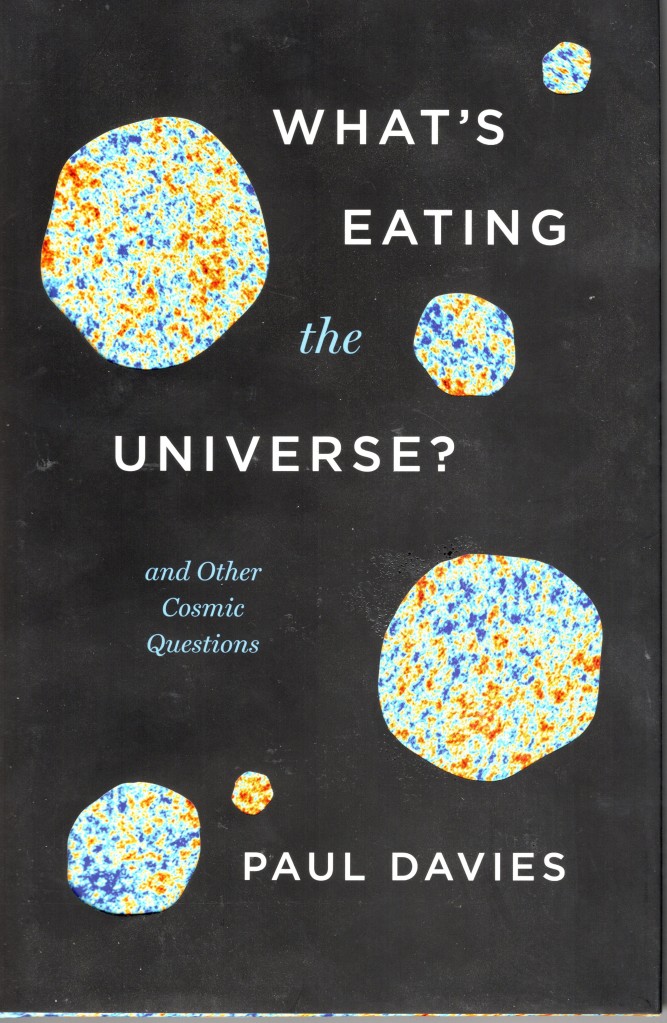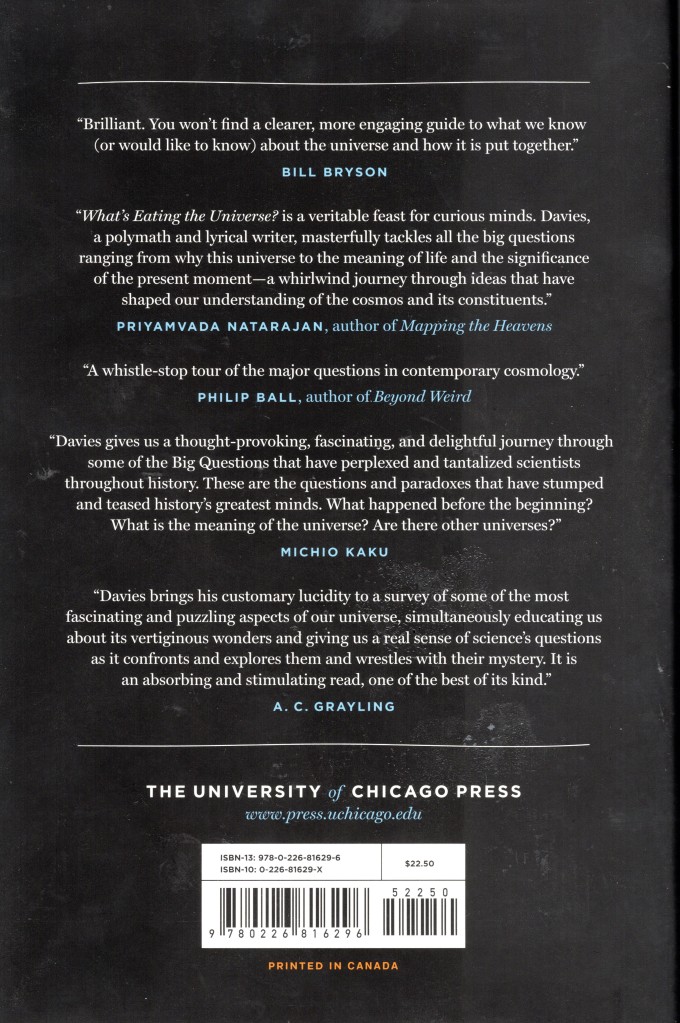Cosmology is the science of the origin and development of the universe, and this post is about a book on Cosmology, “What’s Eating the Universe?: And Other Cosmic Questions” by Paul Davies.
What’s eating the Universe is one of the 30 questions answered in this book. It refers to the mysterious gigantic super-voids we’ve found. Could they be the result of collisions with other universes? Could they be the result of expanding giant bubbles with no space at all in them? That’s not just empty bubbles with empty space, but bubbles in which space itself is missing. Try to imagine that. Some of the 30 questions have answers, others just feature several guesses.
The goal of this blog is to create a list of what I call super facts. Important facts that we know to be true and yet they are surprising, shocking or disputed among non-experts. Super facts are special facts that a well-informed person may want to know.
However, I sometimes create posts that are not super facts but just interesting information, such as this one. What’s eating the Universe is a relatively short and easy read. I bought the hardback version of it.
- Hardcover – Publisher : University of Chicago Press; First Edition (September 22, 2021), ISBN-10 : 022681629X, ISBN-13 : 978-0226816296, 208 pages, item weight : 12.2 ounces, dimensions : 5.67 x 0.71 x 8.58 inches, it costs $19.84 on Amazon. Click here to order it from Amazon.com.
- Paperback – Publisher : University of Chicago Press; First Edition (September 30, 2022), ISBN-10 : 0226823873, ISBN-13 : 978-0226823874, 183 pages, item weight : 9.6 ounces, dimensions : : 5.5 x 0.46 x 8.5 inches, it costs $15.67 on Amazon. Click here to order it from Amazon.com.
- eTextBook – Publisher : University of Chicago Press; First edition (September 22, 2021), ASIN : B096L2WP51, 172 pages, it costs $14.89 on US Amazon. Click here to order it from Amazon.com.

Amazon’s description of the book
Combining the latest scientific advances with storytelling skills unmatched in the cosmos, an award-winning astrophysicist and popular writer leads us on a tour of some of the greatest mysteries of our universe.
In the constellation of Eridanus, there lurks a cosmic It’s as if something has taken a huge bite out of the universe. But what is the culprit? The hole in the universe is just one of many puzzles keeping cosmologists busy. Supermassive black holes, bubbles of nothingness gobbling up space, monster universes swallowing others—these and many other bizarre ideas are being pursued by scientists.
Due to breathtaking progress in astronomy, the history of our universe is now better understood than the history of our own planet. But these advances have uncovered some startling riddles. In this electrifying new book, renowned cosmologist and author Paul Davies lucidly explains what we know about the cosmos and its enigmas, exploring the tantalizing—and sometimes terrifying—possibilities that lie before us.
As Davies guides us through the audacious research offering mind-bending solutions to these and other mysteries, he leads us up to the greatest outstanding conundrum of Why does the universe even exist in the first place? And how did a system of mindless, purposeless particles manage to bring forth conscious, thinking beings? Filled with wit and wonder, What’s Eating the Universe? is a dazzling tour of cosmic questions, sure to entertain, enchant, and inspire us all.
This is my five-star review for What’s Eating the Universe?: And Other Cosmic Questions.
Cosmology explained the easy way
This book is organized into 30 cosmological questions that the author is answering or clarifying. His explanations are naturally not in depth but high level and easy to understand for anyone with an interest in the topic. He manages to keep the topic fascinating and the book is a real page turner. I read the book in a little bit more than one day.
The book discusses cosmology, relativity, the standard model, black holes, the big bang, the CMB, dark matter, dark energy, multiverses and the fate of our Universe, extraterrestrials, and much more, and he gives us insight into the very latest discoveries and views of cosmology.
I especially enjoyed reading chapter 20 & 21 “Can the Universe Come from Nothing” and “How Many Universes Are There”. He tells us that most cosmologists he knows believe there are infinitely many universes. One model is eternal inflation, a space/time mechanism beyond our universe that keeps causing new universes to bubble up and initially expand rapidly, but there are other models. I was surprised that he didn’t mention Roger Penrose’s model, cycles of time, with one Universe giving rise to another (after full expansion and heat death).
However, if there’s only one Universe and time came into existence with it (singularity) it doesn’t help those who want to insert a creation moment. If time didn’t exist before the big bang, the concept of a prior physical cause is meaningless. Asking what was before the big bang is like asking what lies north of the North Pole.
I also especially enjoyed reading chapter 30 “What’s New on the Cosmic Horizon” in which he lists mysteries and recent exciting discoveries, the cold patch in Eridanus (CMB), the mystery with the Hubble constant, what’s beyond the standard model, the prospect of top-down models, etc. Well, all the chapters were interesting.
This book is a quick and easy summary of what’s going on in cosmology. It’s accessible and engrossing writing and the straightforward organization make the book a great introduction to the topic. I highly recommend this book.

Finally, a list of the 30 questions
- Journey from the Edge of Time
- The search for the key to the Universe
- Why is it dark at Night?
- The Big Bang
- Where is the Center of the Universe?
- Why the Cosmos is Actually Fairly Simple?
- What is the Speed of Space?
- What is the Shape of Space?
- Explaining the Cosmic Big Fix
- Most of our Universe is Missing
- What is Dark Energy
- Where Does Matter Come From?
- Gravity Conquers All
- Warped Time and Black Holes
- Is Time Travel Possible?
- What is the Source of Time’s Puzzling Arrow?
- The Black Hole Paradox
- A Theory of Everything?
- Fossils from the Cosmic Dawn
- Can the Universe Come from Nothing?
- How Many Universes Are There?
- The Goldilocks Enigma
- What’s Eating the Universe?
- Is the Universe Actually a Botched Job?
- Are We Alone?
- Is ET in Our Backyard?
- Why Am I Living Now?
- The Fate of Our Universe
- Is There a Meaning to It All?
- What’s New on the Cosmic Horizon?


Hi Thomas, a fascinating deep dive into the universe and its mysteries and creation. Thank you for sharing your thoughts on this book.
LikeLiked by 1 person
Yes I liked this book and its exploration of many deep questions about the universe. Thank you so much Robbie.
LikeLike
Sounds so interesting! I like reading about scientific facts and theories, and also I like reading science fiction. One of my favorites is ‘Project Hail Mary’ by Andy Weir. Eridani is a big factor in the novel. 🙂
LikeLiked by 1 person
Thank you so much Barbara, same for me. I will take a look at ‘Project Hail Mary’ by Andy Weir.
LikeLiked by 1 person
Fascinating, Thomas. Thank you for alerting us to this impressive book.
LikeLiked by 1 person
Thank you so much Gwen
LikeLiked by 1 person
Great review, Thomas, and it does sound like a fascinating read!
LikeLiked by 1 person
Yes it was. Thank you so much Denise.
LikeLike
Chaplin: “Wow, I mean, we like to chase bubbles, but I’m not sure the giant bubble of no space would be fun to play with …”
LikeLiked by 2 people
They are very strange bubbles with no volume and they can swallow you up so you disappear, so be careful Chaplin.
LikeLike
Sounds like a fascinating book and tied directly into the work we’re doing with the Dark Energy Spectroscopic Instrument at Kitt Peak, where we’re mapping the universe in three dimensions. Of course, the goal is that top cosmologists can study the data and understand the strange, large-scale structure of the universe.
LikeLiked by 1 person
“Dark Energy Spectroscopic Instrument” that sounds very intriguing. You certainly have a fascinating profession.
LikeLiked by 1 person
Thank you! It certainly can be.
LikeLiked by 1 person
“…not just empty bubbles with empty space, but bubbles in which space itself is missing. Try to imagine that.”
I’m trying, but it’s so mind-blowing! What a fascinating book, Thomas. I think my dad would love this since he’s always asking me to speculate on the nature of the cosmos, and I’m just as clueless as he is. We enjoy the speculating though and this book sounds like it would give us hours of entertainment. Thanks for the review!
LikeLiked by 1 person
Yes it is a fascinating book. Thank you for your kind words Diane.
LikeLiked by 1 person